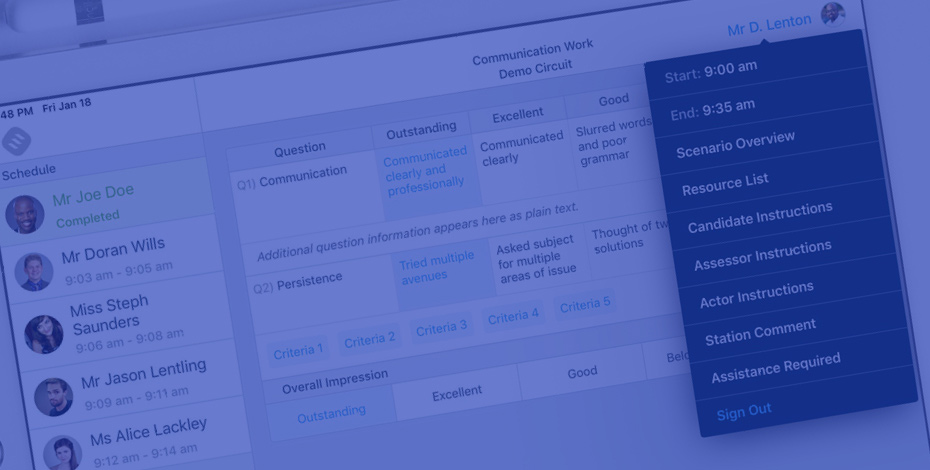The Glossary of Education Reform defines backward design as “a process that educators use to design learning experiences and instructional techniques to achieve specific learning goals.” Coined by Grant Wiggins and Jay McTighe, this approach is also called Understanding by Design (UbD). This approach to curricular planning emphasizes outcomes and assessment as foundational to content and instruction planning.
What Is Backward Design?
Traditionally, educators often design the curriculum with a focus on the content and instructional strategies first. They may know the learning goals they want to achieve, but they begin with things like important scholars in the field or seminal concepts and how they want to present that information to their students via their teaching. This process has sometimes been called a forward design process.
In a backward design model, educators start their curricular planning process by first identifying the intended learning objectives of a unit or course. In a “backward” manner, the learning objectives then inform and determine assessment, and then educators decide content (such as scholarship and concepts) and instruction. The goal of backward design is to ensure what is taught and how it is taught is directly tied to the assessments and together, they help students learn what they are expected to learn.
What Does It Mean to Operationalize Learning?
In a backward design model, educators focus on operationalizing learning goals, objectives, and outcomes. Operationalizing learning outcomes means figuring out how an outcome statement or expectation plays out in the real world. For example, what does having strong communication skills look like in a professional setting? Operationalizing learning goals and objectives helps the educators realize and articulate what students really must be able to do or demonstrate in applicable contexts. It means laying out the steps and expectations involved and demystifying expectations. The outcomes don’t remain an abstract concept differently interpreted by each educator. The operationalizing of the outcomes helps educators identify clear and relevant skills, knowledge, attitudes, habits, and/or behavior that they want to see in their students. Operationalizing the outcomes also helps build consensus among educators regarding what is important for students to learn and what is ancillary. It helps them align their own differing expectations. They must now collectively agree on what a student should learn and be able to demonstrate. Thus, backward design helps educators better plan their teaching so that it is effective and also helps them better scaffold the curriculum in their program or course for greater student learning and success.
Once the operationalizing of outcomes is done, the next step is to determine how to assess the outcomes. This focus on assessment is step two of the backward design/UbD process. Backward design prompts authentic assessments—i.e., assessments that reflect real world scenarios and situations. These authentic assessments capture student grasp of the operationalized outcomes and objectives. Knowing how they are going to evaluate their students helps educators recognize what their students need to be taught to perform well on those assessments. It reduces implicit biases in assessment design.
The third and final step in backward design is deciding the content and instruction. The content should now focus on what students should know and be able to do and how to help them learn it because the assessment is now a known and well-designed entity. The outcomes and assessments dictate content and instruction rather than the other way around. The content and instruction become more specific, tailored, and relevant for students to achieve the intended outcomes.
What Is the Role of Assessment in Backward Design?
In all curriculum designing, assessment plays an important role. However, in backward design, there are some important assessment design expectations that should be kept in mind. First, summative assessments must be strongly aligned with the operationalized outcomes and should be able to capture them adequately. Next, they should be authentic and relevant to real-world contexts. Finally, they must play a central role in informing teaching strategies and content covered so that students are well prepared and can be successful in demonstrating their learning via the summative assessments.
Additionally, in backward design, formative assessment plays a very important role in the instruction and scaffolding of content. Formative assessments help instructors and students monitor and address student learning outcomes in an ongoing manner so that student learning needs can be gleaned, and gaps can be closed. Integral to backward design, these formative assessments give educators insight into how well their teaching methods are helping students achieve learning goals. Educators can use this feedback to iterate, adapt, and pivot teaching practices to better serve students’ needs and support their achievement of learning outcomes. Formative assessments can take many forms but basically give students and educators actionable feedback. Ongoing assessments and feedback can help students understand their own achievement, strengths, performance, and challenge areas so that they achieve proficiency across the desired learning goals and objectives.
What Are the Advantages of Backward Design?
With backward design, teaching methods, content, and assessments are inherently aligned with learning objectives and standards. This creates coherent, consistent learning experiences for students. From the start, educators make sure students know what they are expected to learn and how they are expected to demonstrate it. Every activity supports learning outcome achievement. Because backward design bases teaching practices on helping students achieve intended learning outcomes, the expectations become very explicit and aligned, and as a result, students’ grasp of concepts and ideas improves. The relevance and applicability of what they are learning increases exponentially. A cohesive, backward-designed curriculum amplifies students’ learning of the content against the desired outcomes. It catalyzes their success because they now have the skills to demonstrate their learning in their assessments. Learning becomes transparent and because it is aligned, this curricular design process makes learning and performance easier and more intuitive for the student.
Overall, the backward design model is meant to work as a curricular planning process that begins from the ends educators want to achieve—i.e., the goals, outcomes, and objectives they want to see our students gain. It requires educators to come together and collaborate to build a program curriculum as they get on the same page during the backward design process and level-set expectations. Designing real-world, authentic assessments helps truly capture whether students have gained the intended learning. These assessments help ensure that the instruction and content is cohesive and precise for students.
Sources:
Vanderbilt University: Understanding by Design






